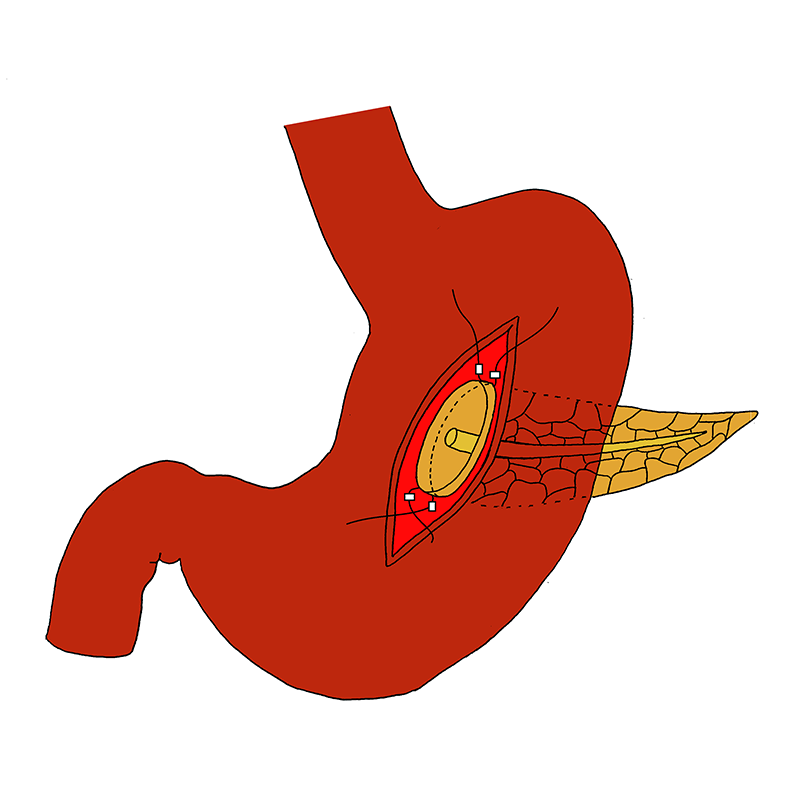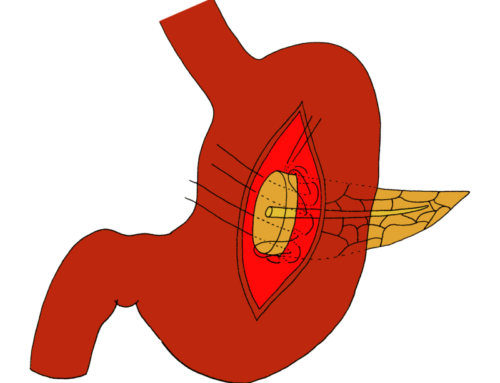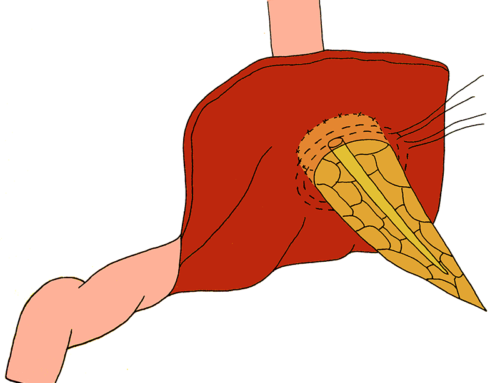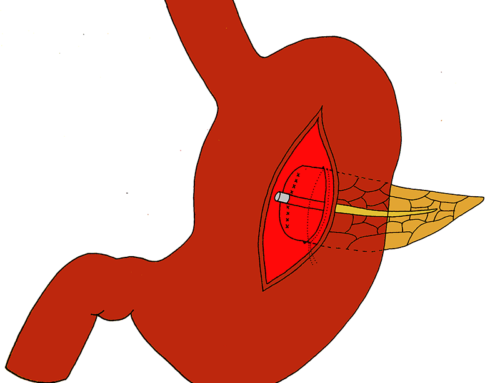A gastrotomy is made in the posterior wall of the stomach, with a size about 3/4 the width of the pancreatic remnant. Two traction sutures are placed on both ends of the pancreas. An anterior gastrotomy is performed, just above the posterior incision. Using the two traction sutures, the pancreatic stump is invaginated into the gastric lumen, through the posterior gastrotomy.
Trangastric pancreatogastrostomy using two transpancreatic sutures with buttresses
- A gastrotomy is made in the posterior wall of the stomach, with a size about 3/4 the width of the pancreatic remnant.
- Two traction sutures are placed on both ends of the pancreas.
- An anterior gastrotomy is performed, just above the posterior incision.
- Using the two traction sutures, the pancreatic stump is invaginated into the gastric lumen, through the posterior gastrotomy.
- The anastomosis is performed using two transpancreatic sutures with buttresses on the superior and inferior borders of the pancreas, placed via the anterior incision; two threads with a straightened needle on both ends and four buttresses were used.
- The first suture was placed from within the gastric lumen to outside on one side of the superior corner of the gastrotomy, through the full-thickness of the stomach wall, then from posterior to anterior through the superior pancreatic parenchyma and back to inside the gastric lumen again through the full-thickness of the stomach wall on the other side of the superior corner of the gastrotomy. The second suture was placed in a same manner at the inferior corner of the gastrotomy.
- The four buttresses (two on each side) are inserted through the needles and the sutures are tied.
- The anterior gastrotomy is closed.
- Lee JY, Kim EY, Lee JS, et al. A novel pancreaticogastrostomy method using only two transpancreatic sutures: early postoperative surgical results compared with conventional pancreaticojejunostomy. Ann Surg Treat Res. 2015;88:299-305.









